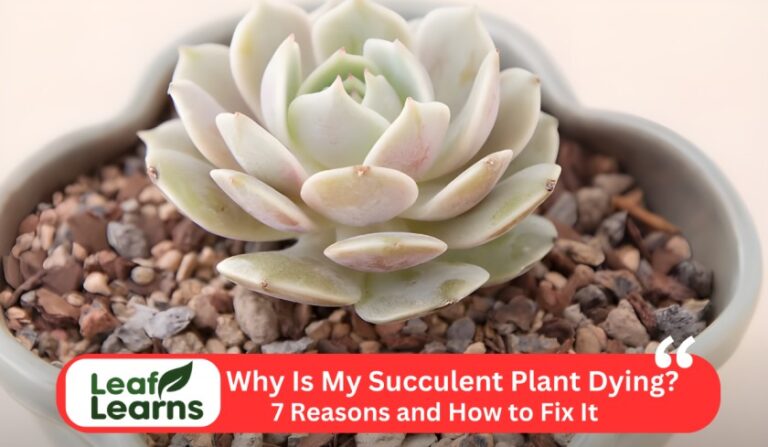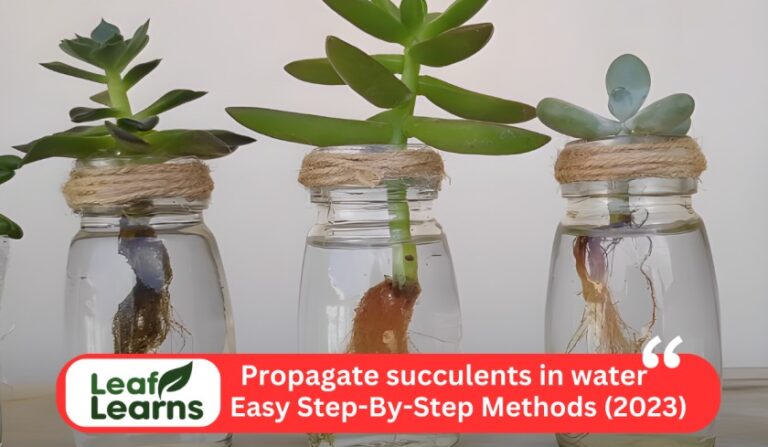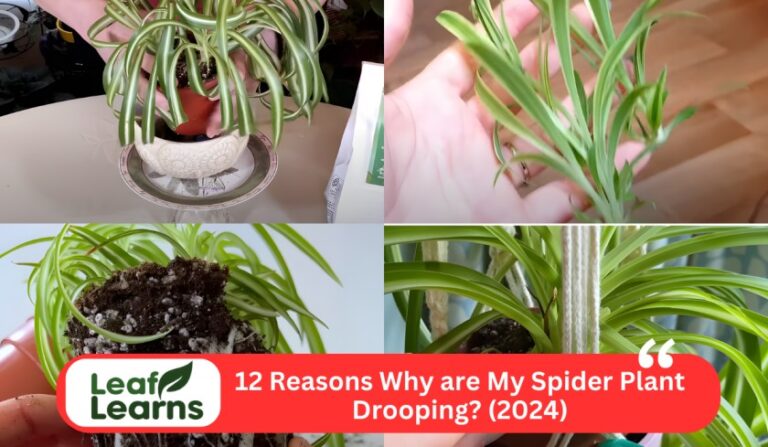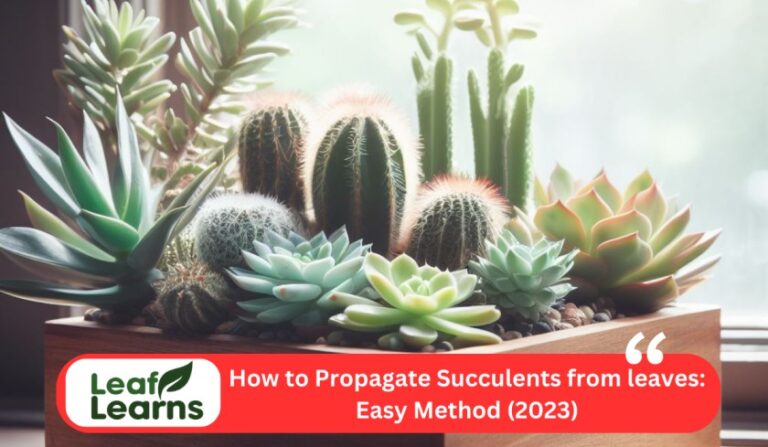White Spots on Orchid Leaves: Causes and Treatment (2023)
White spots on Orchid leaves are a visual indication of problems that can affect the well being of the orchid as a whole. These spots which vary from being caused by overwatering, fungal infections or pests could compromise the vitality and attractiveness of an orchid.
Apart from being a cosmetic problem, white spots are usually indicative of stress or imbalance in the flower’s environment. In high humidity, fungal infections such as powdery mildew may flourish while pests like mealybugs can affect the plant’s structure and vigor.
If white spots appear on the orchid, prompt identification and proper treatment can help stop them from impacting the overall healthiness and vitality of the plant.
Contents
- 1 Why Does My Orchid Have White Spots on the Leaves?
- 2 Leaves Suffering from Frostbite or Scorch
- 3 Mealybugs
- 4 Chemical Damage
- 5 How Do You Treat White Spots on Orchid Leaves?
- 6 Powdery Mildew Treatment
- 7 What does Fungus on Orchids Look Like?
- 8 Treating Orchid Fungus
- 9 Preventing Orchid Fungus
- 10 Fighting Orchid Infections: Safeguarding Your Botanical Beauties
- 11 Killing Orchid Bugs
- 12 What is the Best Fungicide for Orchids?
- 13 Understanding White Spots on Orchid Leaves: Diverse Manifestations and Concerns
- 14 Addressing White Spots: Comprehensive Considerations
- 15 Conclusion
- 16 FAQs
Why Does My Orchid Have White Spots on the Leaves?
Overwatering
Curious why your orchid has those strange white dots? The silent murderer could be overwatering.

However, orchids are more fragile than they appear and too much water can cause a fungus or those ugly marks.
Make sure that your watering schedule meets the needs of your orchid if you want to keep those leaves bright.
Low Humidity Level
If your orchid has white spots, it may be complaining about the humidity level in the case. These beautiful creatures thrive in humid conditions.
Orchids may present white patches when the air is too dry. Raise the humidity around your orchid, and as the spots disappear, you will see your plant thrive in its preferred environment.
Leaves Suffering from Frostbite or Scorch
Is your orchid subjected to extremely high or low temperatures? Those white spots could be due to frostbite or scorch. Orchids can easily be affected by temperature changes.
Keep them away from extreme cold or direct sun rays but let them “bask” in conditions similar to what they would be experiencing back home.
Powdery Mildew
Those bewildering white spots might be due to powdery mildew. This fungal scourge thrivves under moisture-rich situations.

Preserve your orchid by ensuring that it receives sufficient ventilation and is planted at an appropriate distance from others, keep powdery mildew away, and ensure the leaves remain clean.
Mealybugs
One possible source of white spots on your orchid leaves might be mealybugs. These small, cotton-like insects eat your orchid’s sap, leaving traces of their destruction.
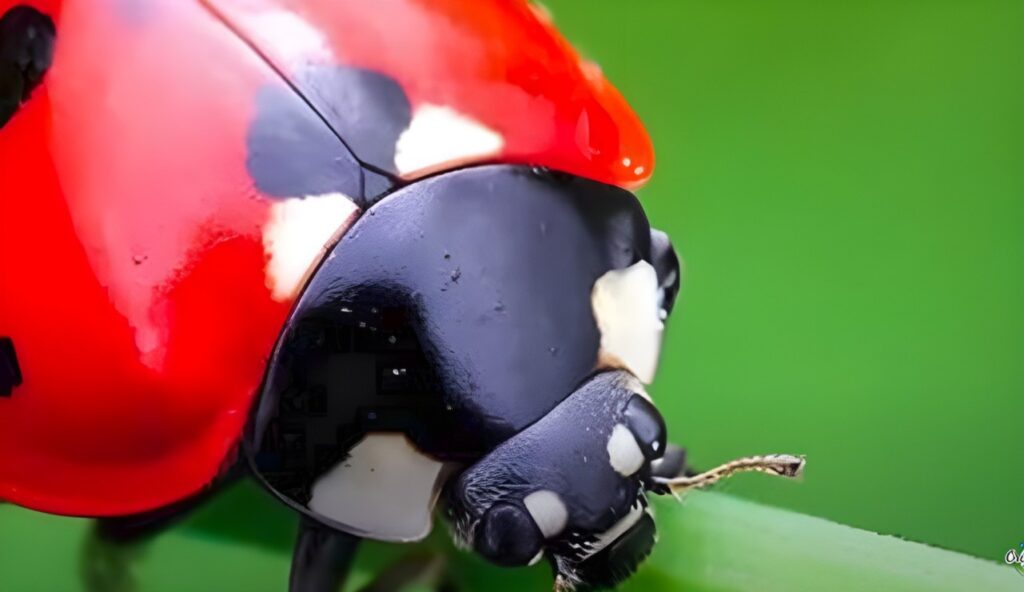
This is because of their feeding process which undermines the plant and creates those characteristic white spots. Combatting mealybugs involves a close look at your orchid and competent pest control measures.
Sunburn
Even orchids are not safe from sunburns, and these white spots may prove the point. Intense sunlights can scorch the delicate leaves hence making it discolored.
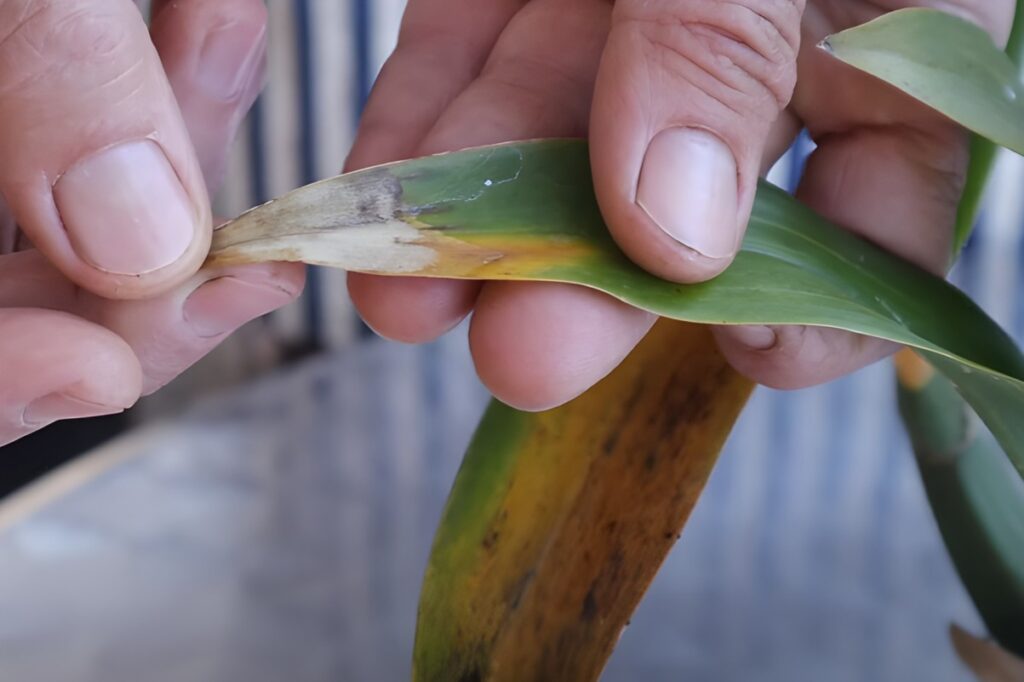
Finding the right proportions of light for your orchid is crucial – give sufficient shade in order not to get sunburned, especially.
Water Spots
Over-watering may cause white spots on the orchid leaves. Water marks appear where the tiny droplets act like lenses, reflecting and focusing sunlight onto leaves resulting in damage.
To prevent this problem, water during the early morning or late evening to ensure that there are no remaining water droplets on the leaves.
Chemical Damage
Potential damaging of your orchid with white spots may also occur due to the use of some certain harmful chemicals like pesticides or fertilizers.
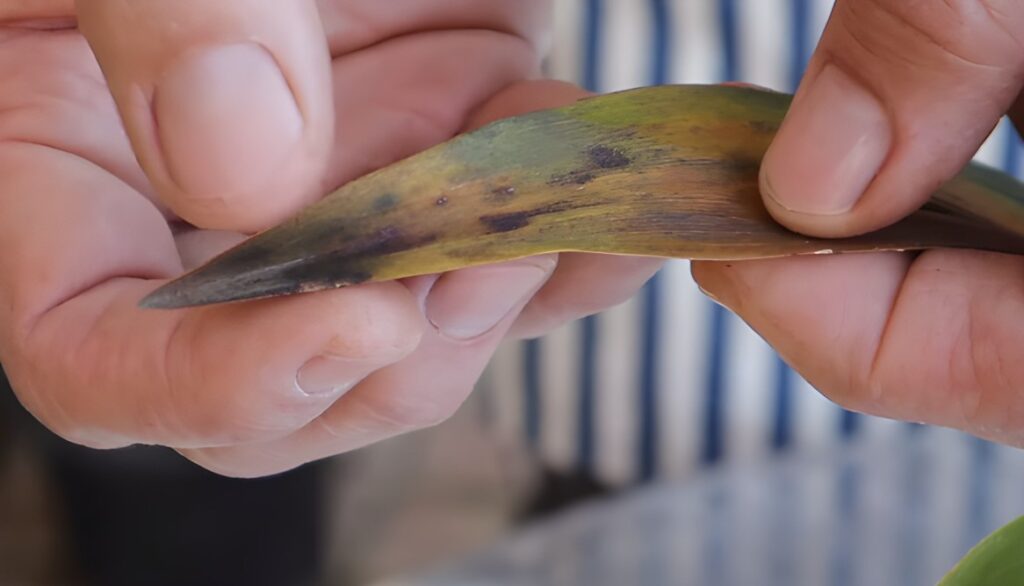
Always adhere to recommended application guidelines and if possible use orchid-friendly substitutes to prevent damage from chemicals.
How Do You Treat White Spots on Orchid Leaves?
Watering Schedule
White spots on orchid leaves must first and foremost be treated by maintaining an optimal watering schedule. Orchids are easily affected by over and under watering.
Make sure that you water them when the top inch of the potting mix is dry to touch. ªKeep it consistent – the orchid will be stressed if there are sudden changes in watering behavior.
Powdery Mildew Treatment
In order to restore life to your orchid, you should control powdery mildew. A homemade spray consisting of neem oil and water is a very powerful antifungal solution.
You should also make sure that you increase air circulation around your orchid in order to prevent powdery mildew from growing.
Mealybug Control
Mealybugs are typical offenders for white spots on orchid foliage. Apply a solution of water and dish soap on infested areas in order to combat these pests. Or, consider bringing natural predators such as ladybugs or using neem oil to repel and control infestations of these insects.
Recover from Sunburn
Orchid leaves may have white spots due to sunburn. Gradually move your orchid to brighter locations over a period of time so that it can get accustomed to increased sunlight gradually.
Shield sensitive leaves when the sun is strongest, and consider draping some sheer curtains to soften intense light.
Treating For an Over-Dried Orchid
- First of all, check the orchid’s watering schedule. Over-drying can cause stress causing the plant to be vulnerable to such things as having white spots.
- Adjust the watering schedule to keep moisture levels consistent, but not overly moist. Use a well-draining orchid mix to keep it properly hydrated.
- Home Remedies to Deal With Pest Attack:
- Pest control is important for the health of orchids. Consider natural treatments such as neem oil or insecticidal soap that treats pests without affecting the orchid.
- Use a mild solution and apply it to the infected areas, covering them thoroughly. Applying it regularly prevents them from spreading.
Providing Good Ventilation
- Proper ventilation is essential to prevent fungal and bacterial problems. Place the orchid in a place where air circulates freely.
- Good air flow is also suggested to keep the orchid in a healthy environment, avoiding crowded spaces reduces the chances of white spots.
- Time-to-Time Inspections for Pests:
- Early detection enables timely intervention, reducing the likelihood of severe damage.
- Look at both sides of the leaves, stems and around the base of your orchid. Address pests quickly to keep an orchid pest-free.
Pruning
- Removal of affected leaves is a successful approach to dealing with white spots. Cut off damaged areas with sterile instruments to prevent further spread of infections.
- Pay attention to cutting off leaves that are heavily damaged while keeping the overall shape of the orchid. Pruning encourages new, healthy growth.
What does Fungus on Orchids Look Like?
Finding fungus on your favourite orchids can be a source of disappointment, but early detection is essential for the proper handling of the problem.
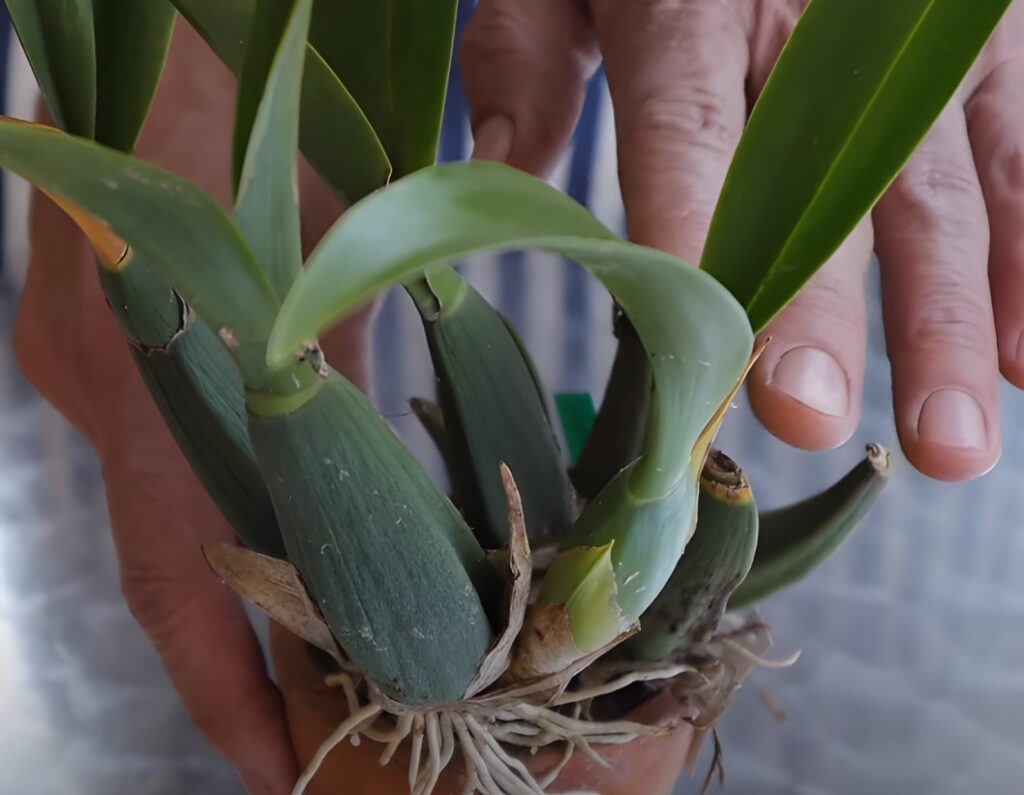
Typical symptoms of orchids affected by fungus may include small lesions on leaves characterized as irregular, discolored spots.
These spots are usually fuzzy or powdery in appearance that can vary from white to brown or even black. Keep an eye for these symptoms and make a timely intervention to ensure your orchid is healthy.
Treating Orchid Fungus
The approach to orchid fungus takes strategy. First isolate the affected plant so that the infection will not spread to other plants.
Remove any infected parts cautiously, sterilizing your cutting tools with every cut. Treat the orchid with a fungicidal solution according to the instructions provided by the product.
Create the best growing environment, regulate the humidity levels and improve air circulation. Consider moving the orchid into fresh, well-draining medium to eliminate any remaining fungal spores.
Monitor the plant’s development regularly and employ treatments as needed until all fungi have been eliminated.
Preventing Orchid Fungus
Orchid fungus can best be eliminated by preventing it. Favorable orchid care practices include appropriate levels of humidity, proper ventilation, and preventing overwatering.
Inspect your orchids regularly for any signs of fungus or other diseases. When adding new plants to your collection, initially quarantine them in order to prevent possible outbreaks.
Apply a preventative fungicide regularly, especially in high humidity times.
Fighting Orchid Infections: Safeguarding Your Botanical Beauties
Orchids, having fragile charm to them, are quite prone to infections that spoil their looks. To protect these botanical marvels, a proactive stance against infections is essential.
Start with the ideal growing environment, that is proper ventilation and watering, balanced fertilization.
Take off the affected parts, sterilize tools, and possibly applying a broad-spectrum orchid-friendly fungicide. By engaging in preventive care and acting quickly your orchids will be vibrant, healthy, and disease free.
Killing Orchid Bugs
Orchid bugs are unyielding enemies in the struggle to find flawless petals. For small infestation, manual removal is the best solution but if you are dealing with a large number of pests then use insecticidal soaps or neem oil – it kills pests and spares your orchids.
So remember, consistency is everything – regular monitoring and proactive measures will keep those pesky bugs away allowing your orchids to bloom in peace.
What is the Best Fungicide for Orchids?
However, the most appropriate fungicide for your orchid will depend on the particular fungal enemy. Here’s a quick guide:
Broad-spectrum fungicides: Treat multiple fungal diseases like mancozeb or chlorothalonil.
Contact fungicides: Similar to copper fungicides, work directly by killing fungal spores as soon as contact is made.
Systemic fungicides: Consumed by the plant, and transported throughout its tissues , giving a longer protection.
Always follow the manufacturer’s instructions for proper and effective use. A local nursery or garden center can also offer guidance on the right product for your needs. So these are all the solution of White Spots on Orchid Leaves.
Understanding White Spots on Orchid Leaves: Diverse Manifestations and Concerns
Many orchid enthusiasts may encounter the puzzling issue of white spots on their orchid leaves. These spots can vary in size and appearance, ranging from tiny white powdery spots to large, conspicuous ones.
Some orchids may exhibit white and brown spots on their leaves, leaving growers wondering about the causes behind these markings. The identification of these symptoms becomes crucial for effective treatment.
Orchid leaves might also have fuzzy or hard white spots, and there are specific cases where the spots occur in series, on quenching leaves, or even in response to particular environmental conditions, such as in Japan.
The presence of white spots on orchid leaves is not only a cosmetic concern but may also indicate underlying issues affecting the plant’s health.
Addressing White Spots: Comprehensive Considerations
Understanding the causes and implementing appropriate treatment is vital for addressing white spots on orchid leaves. Growers often question what leads to these spots and seek ways to treat and prevent them.
Factors like pests, diseases, or environmental conditions can contribute to the development of white spots. As such, it becomes essential to identify the root cause. Treatment methods may include adjusting the orchid’s environment, implementing pest control measures, or using specific solutions to address fungal or bacterial issues.
The numerical references, such as the count of leaves with white spots, also play a role in assessing the severity of the problem and tracking the effectiveness of treatment over time.
In addition to these considerations, miscellaneous elements like the type of orchid, its fragrance, and its geographical location can further contribute to the overall understanding of the issue and guide growers in maintaining healthy orchids.
Conclusion
In the intricate ballet of caring for orchids, it is important to know the various causes behind those cryptic white patches in order to preserve not only their well-being but also their aesthetic appeal.
Be it over watering, dealing with humidity levels, guarding against harsh temperatures or addressing fungal perils – each preventative measure helps ensure the survival of your orchids.
Uninvited visitors such as mealybugs or dangers of sunburn are also something we should pay attention to, prompting us to follow regular scrutinies and timely response.
FAQs
How do you treat white spots on orchid leaves?
Treating the white spots on orchid leaves requires attention to the frequency of watering, treating humidity issues such as implementing better ventilation for a sufficient air supply, and possibly treating a specific fungicide if these blemishes are fungal infections. Another way of dealing with the condition is to prune affected leaves.
How do you get rid of powdery mildew on orchids?
Powdery mildew on orchids can be combated by adequate ventilation, proper spacing and homemade neem oil with water solution applied as a strong antifungal spray.
Routine treatment and better air flow can assist in keeping powdery mildew away.
How do I get rid of the white scale on my orchid?
Apply a water-and-dish soap solution directly to the afflicted parts of orchids to eradicate white scale. Utilising neem oil or introducing ladybirds or other natural predators can also be useful in managing and avoiding infestations of white scale.
What is the best natural fungicide for orchids?
One of the greatest natural fungicides for orchids is frequently regarded as neem oil. Because of its antifungal qualities, it works well against powdery mildew and other fungal infections.
Additionally, when used in accordance with suggested standards, it is safe for orchids and environmentally beneficial.
Can I spray soapy water on orchids?
Yes, misting orchids with a little soapy water solution can be a useful way to keep pests like mealybugs at bay.
As part of a thorough pest management plan, make sure the solution is mild and use it sparingly, being careful not to oversaturate the plant.
What is the white pest on my orchid?
Mealybugs might be the white pest on your orchid. These microscopic, cotton-like insects leave behind a white, waxy residue after feeding on orchid sap.
To keep pests away from your orchids, use a solution of water and dish detergent, introduce natural predators, or use neem oil.


